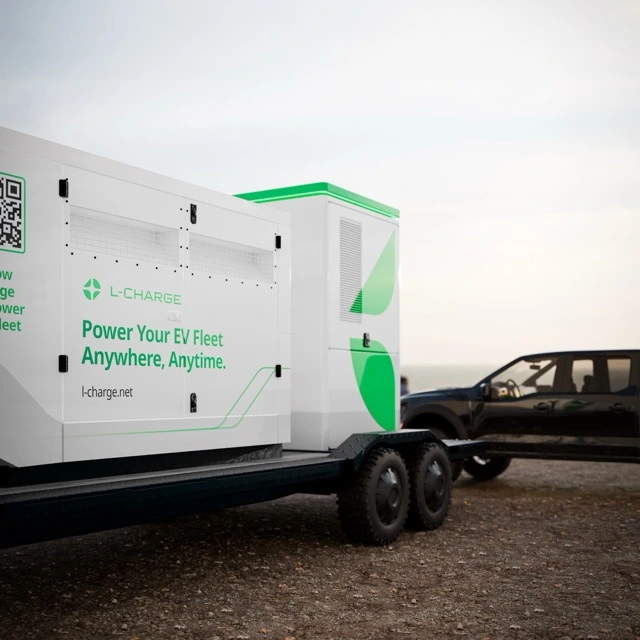Charging as a Service (CaaS): EV Charging for Fleets


Electrifying a commercial fleet comes with many challenges from long utility wait times and expensive grid upgrades to unpredictable energy costs. For many operators, the traditional approach to EV charging is too slow, costly, or complex.
That’s where Charging as a Service (CaaS) comes in. This flexible, turnkey model allows fleets to deploy EV infrastructure quickly, without the upfront capital expense or operational burden.
In this article, we break down what Charging as a Service is, how it works, and why it’s becoming the go-to solution for fleet electrification.
Charging as a Service (CaaS) is a subscription-based model that provides access to EV charging infrastructure without the need to purchase, install, or manage it yourself.
Instead, the CaaS provider handles everything from site design and permitting to installation, power supply, and ongoing maintenance. Your fleet simply pays a predictable fee, either per kWh of energy consumed or as a flat monthly rate.
CaaS is part of a broader trend toward infrastructure-as-a-service models, giving fleet operators the tools they need to electrify without the delays or risk associated with building their own network.
Explore our Charging-as-a-Service solution →
A typical CaaS offering includes:
Some providers, like L-Charge, even offer mobile, ultra-fast EV chargers powered by renewable natural gas (RNG) enabling grid-free deployment in just days.
With CaaS, you don’t have to invest millions in infrastructure. Everything is covered by the provider, allowing you to scale your EV fleet without draining capital budgets.
While grid-tied charging infrastructure can take 1–3 years to install, off-grid Charging as a Service can be deployed in weeks especially useful for temporary depots, construction sites, or fleets facing utility bottlenecks.
You get a turnkey EV charging solution, without hiring in-house energy or infrastructure teams. The provider handles operations, maintenance, remote monitoring, and upgrades.
CaaS adapts to your fleet’s needs. Start with 5 vehicles and scale to 500 without changing your contract. Many providers offer modular and mobile charging solutions to keep pace with fleet growth.
With fixed monthly fees or kWh-based pricing, CaaS gives you financial clarity. This makes it easier to measure ROI and reduce total cost of ownership (TCO).
Charging as a Service is ideal for:
For more insights, see our EV charging guides and fleet case studies →
One of the fastest-growing CaaS segments is off-grid charging as a service, where mobile, RNG-powered units provide fast, clean energy with no grid hookup needed.
This model removes dependence on local utilities, accelerates fleet rollout, and unlocks charging at any location construction zones, rural roads, or pop-up charging hubs.
What is Charging as a Service (CaaS)?
Charging as a Service is a subscription-based model that allows businesses to deploy EV chargers without owning or installing them. The provider supplies the hardware, installation, and energy and the fleet pays only for usage or uptime.
What are the benefits of Charging as a Service for fleets?
CaaS eliminates upfront costs, accelerates deployment, and provides full operational support. It’s ideal for fleets looking to electrify quickly without grid delays or infrastructure risk.
How does CaaS differ from owning EV charging stations?
With CaaS, you don’t buy or maintain the equipment. It’s similar to leasing but fully managed. You get the benefits of EV infrastructure without the operational burden.
Can CaaS work without grid access?
Yes. Off-grid Charging as a Service options like L-Charge’s RNG-powered mobile units can deliver ultra-fast EV charging with zero reliance on the utility grid.
If your fleet electrification plans are stuck due to infrastructure delays, limited grid capacity, or CAPEX constraints, Charging as a Service might be the fastest, lowest-risk path forward.
Whether you need depot charging, mobile charging, or temporary pop-up infrastructure, CaaS gives you a way to launch and scale without waiting for the grid to catch up.
Want to electrify your fleet without delay or capital risk?
Learn more about L-Charge’s Charging as a Service solution.